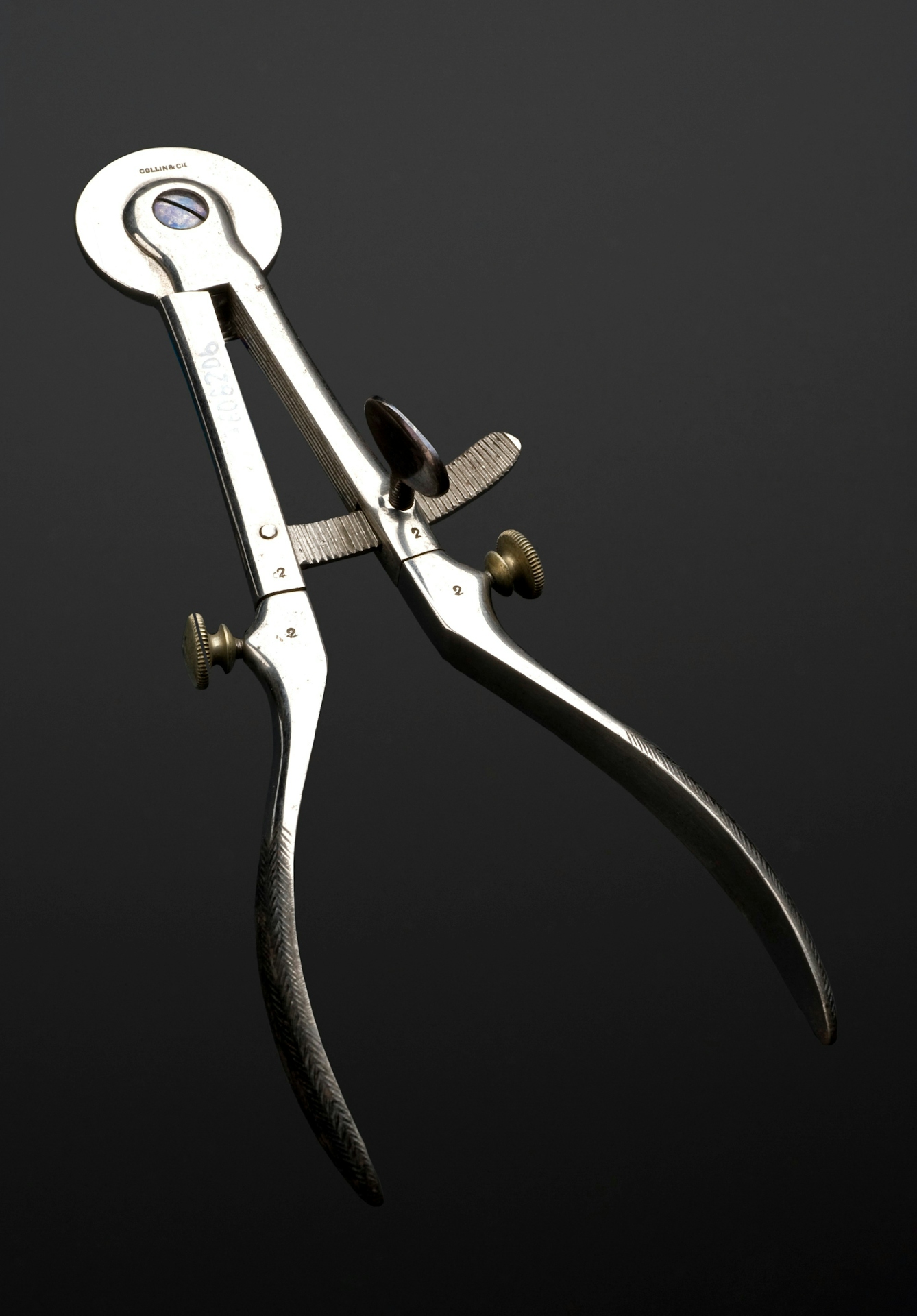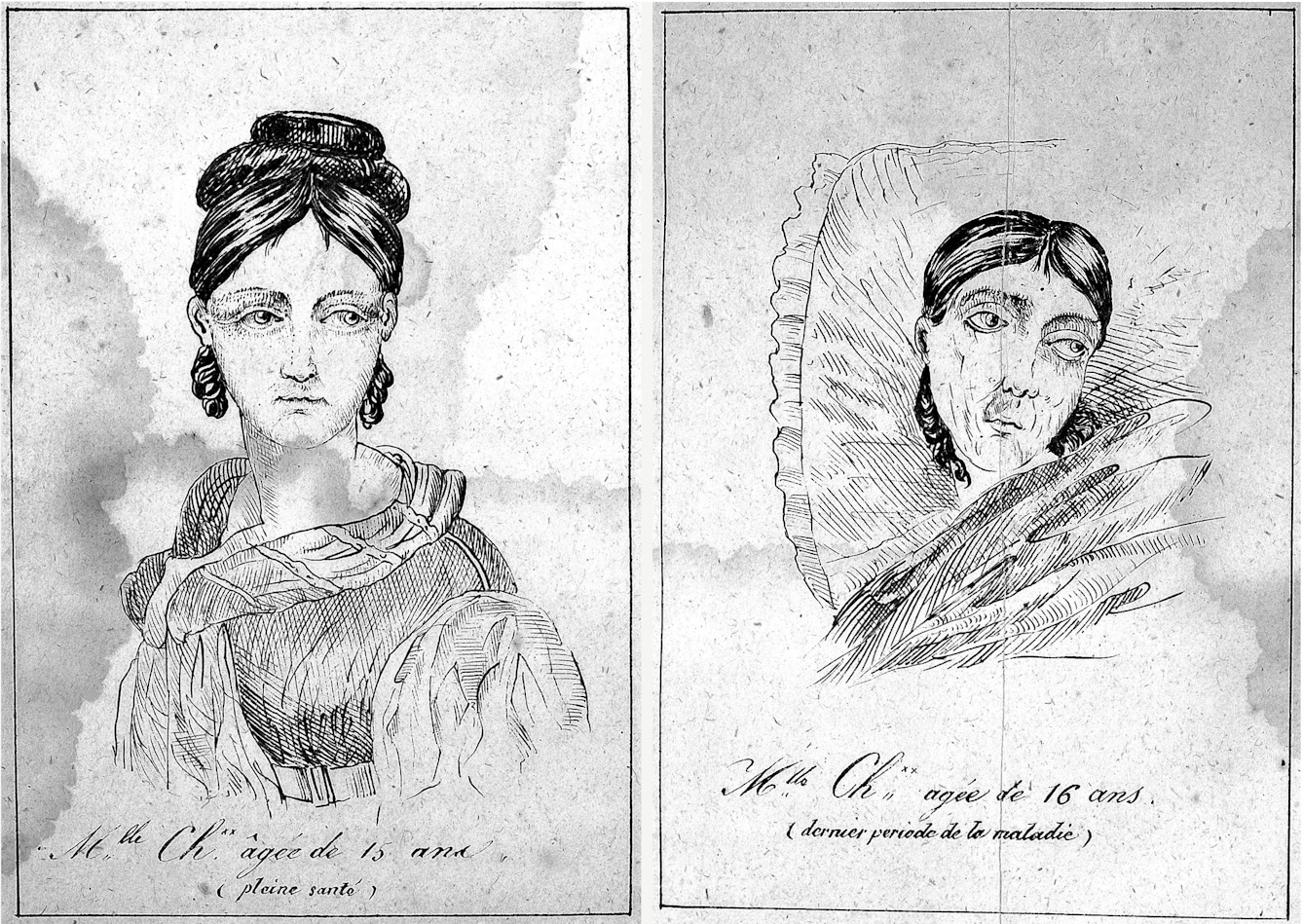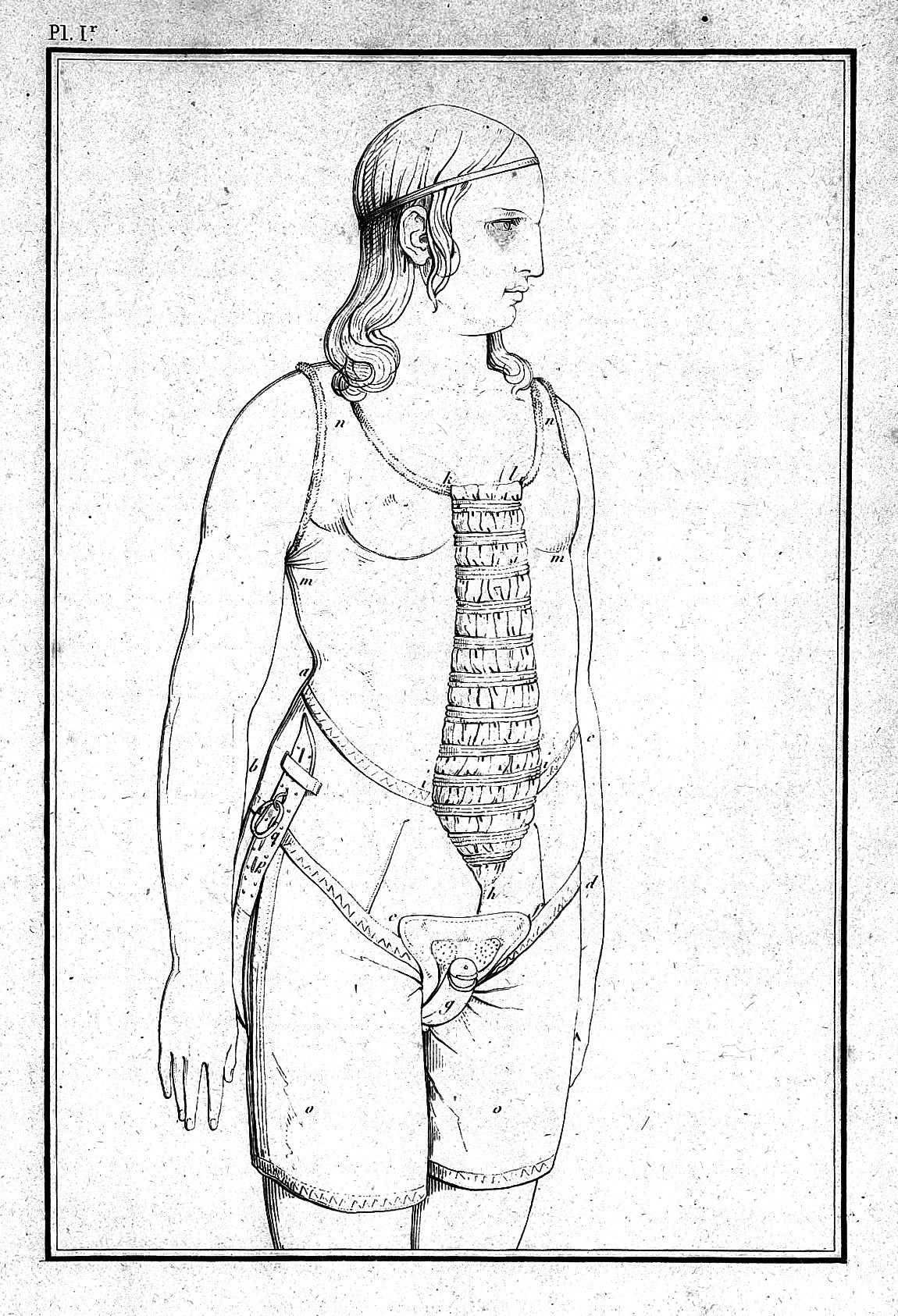Doctors in the 19th century viewed female masturbation as an abnormal practice that could cause insanity or even kill. Not surprisingly, remedies could be extreme.
In 1837 extensive research on the vulvas of Parisian sex workers by French doctor Alexandre Parent du Châtelet (1790–1836) was published posthumously. Châtelet had studied the genitals of over 5,000 women and was surprised to find that, contrary to popular belief, “The genital parts of the prostitute… present no special alteration which is peculiar to them, and in this respect they do not differ from those of married women of unblemished character.”
What’s more, as he revealed in his book ‘On Prostitution in the City of Paris’,“There is nothing remarkable either in the dimensions or the dispositions of the clitoris in the prostitutes of Paris, and that in them, as in all married women, there are variations, but nothing peculiar."

Spencer Wells-type obstetrics clamp, Paris, France, c.1870–1900. Used for ovariotomies, a procedure used controversially not only for cysts and tumours but also for hysteria.
Châtelet was one of several 19th-century doctors bothering sex workers’ clitorises with a tape measure, because the prevailing medical opinion taught that a promiscuous woman’s clitoris would be significantly larger than that of a woman “of unblemished character”.
The perils of pleasure
Large clitorises have been thought to be analogous to mini-penises, and therefore responsible for lesbianism and abnormal sexual appetites in women since ancient times. Female genital mutilation (FGM) continues to be a major concern across Africa, Asia and the Middle East today, but it is important to remember the West’s own history of this barbaric practice. Some of the earliest references to the clitoris in Western medicine are descriptions of how to curb promiscuity in women by cutting it off.
The 1st-century Greek physician Soranus of Ephesus was kind enough to provide instructions on how to carry this out (brace yourselves).
The presenting feature of the deformity is a large masculinised clitoris. Indeed, some assert that its flesh becomes erect just as in men and as if in search of frequent sexual intercourse. You will remedy it in the following way: With the woman in a supine position, spreading the closed legs, it is necessary to hold [the clitoris] with forceps turned to the outside so that the excess can be seen, and to cut off the tip with a scalpel, and finally, with appropriate diligence, to care for the resulting wound.
As well as worrying that the clitoris was responsible for lesbianism and nymphomania, Victorian doctors had arrived at the conclusion that masturbation would eventually kill you, and blamed this on the clit as well. But as well as viewing an enlarged clitoris as the cause of masturbation, doctors also thought it to be symptomatic of a habitual diddler.
The sin of ‘self-pollution’ was genuinely believed to severely weaken mind, body, and soul. In 1875, ‘The Ladies’ Medical Guide’ described the symptoms of masturbation for parents to watch out for in their daughters, such as “a greenish tint around the eyes” and a greatly impaired digestion. The guide warned that the young woman might be “averse to play” and seek “solitary places where it can indulge in its vicious propensities” until ultimately “the intellect grows weaker and weaker until imbecility and idiocy overwhelm the victim”.

Young girl suffering from the apparent effects of masturbation.
The cruellest cut
It was symptoms like this that led the parents of 29-year-old ‘Lizzie B’ to seek the advice of Dr John O Polak in 1896. Dr Polak learned that Lizzie masturbated up to 40 times a day, and often in public. Upon physical examination of Lizzie, Polak found that she had an enlarged clitoris. The father insisted that “something radical must be done”, and so Lizzie was subjected to a clitoridectomy.
Three months later, Polak was pleased to report in an article, ‘A Case of Nymphomania’ in the journal Medical News, that Lizzie was cured and “her mental condition clearer”.
Victorian doctors had arrived at the conclusion that masturbation would eventually kill you.
Dr Isaac Baker Brown (1811–73) was a respected British physician who linked all manner of ailments in women to “peripheral excitement of the pudic nerve” (masturbation). Baker Brown warned that this kind of excitement would led to hysteria, spinal irritation, hysterical epilepsy, idiocy, insanity and, eventually, death.
In ‘On the Curability of Certain Forms of Insanity, Epilepsy, Catalepsy, and Hysteria in Females’ (1866), Baker Brown reported his success in performing multiple clitoridectomies as panacea cure-all from blindness to back problems.

Neurologist Jean-Martin Charcot demonstrating hysteria in a patient at the Salpêtrière hospital in Paris, 1887.
In one 1863 case, he cut the clitoris out of a 30-year-old woman who had developed “a great distaste for her husband”. Baker Brown declared the operation an “uninterrupted success” and the patient returned home.
To his surprise, Baker Brown’s theories were not well received, and in 1867 he was expelled from the Obstetrical Society of London. Baker Brown is very much the pantomime villain of Victorian gynaecology, but his butchery did not exist in a vacuum. He was himself at a loss as to why he had been singled out when so many of his peers had themselves performed clitoridectomies, and I have no doubt that many of the good doctors who presided over his expulsion were equally guilty, if just a bit quieter about it.
Fresh air and cold water
Thankfully, clitoridectomies were not widely prescribed to ‘cure’ masturbation. Overly sexed Victorian ladies were far more likely to find themselves on the wrong end of an ice-cold vaginal douche or submerged in a bath of freezing water than facing a surgeon’s knife. Other ‘cures’ included plain food, exercise and fresh air.

Woman wearing a corset for treatment against masturbation, 1822
Henry Newell Guernsey was one of many doctors who suggested battling the urge with “out-door exercise… taken daily during favourable weather” (‘The Application of the Principles and Practice of Homoeopathy to Obstetrics’, 1878). ‘The Diagnosis, Pathology and Treatment of Diseases of Women’ (1868) recommends a “plain and simple but nourishing diet” and the “avoidance of mental excitement or effort” to kibosh the horn.
We will never know how many women were subjected to such treatments, but we do know that none of it was necessary. Not only is masturbation a wonderful and gloriously fun thing to do, it’s actually good for you. Research published in the Journal of Sex Research in 2014 found that:
For many women, masturbation allowed them to express positive feelings toward their bodies, and it served as a nurturing and affirming mode of self-acceptance. Whether feeling joy or pleasure, having fun, or relieving stress, masturbation enhanced many women’s lives in positive ways.
It has taken us a long time to get here, and there is still work to be done, but we are finally beginning to see just how important masturbation is to sexual fulfilment.
About the author
Dr Kate Lister
Kate Lister is the creator of the award-winning online research project Whores of Yore, which seeks to build public engagement and disseminate research on the history of sex and sexuality through social media. She also lectures at Leeds Trinity University, and is widely published on the sex trade.

